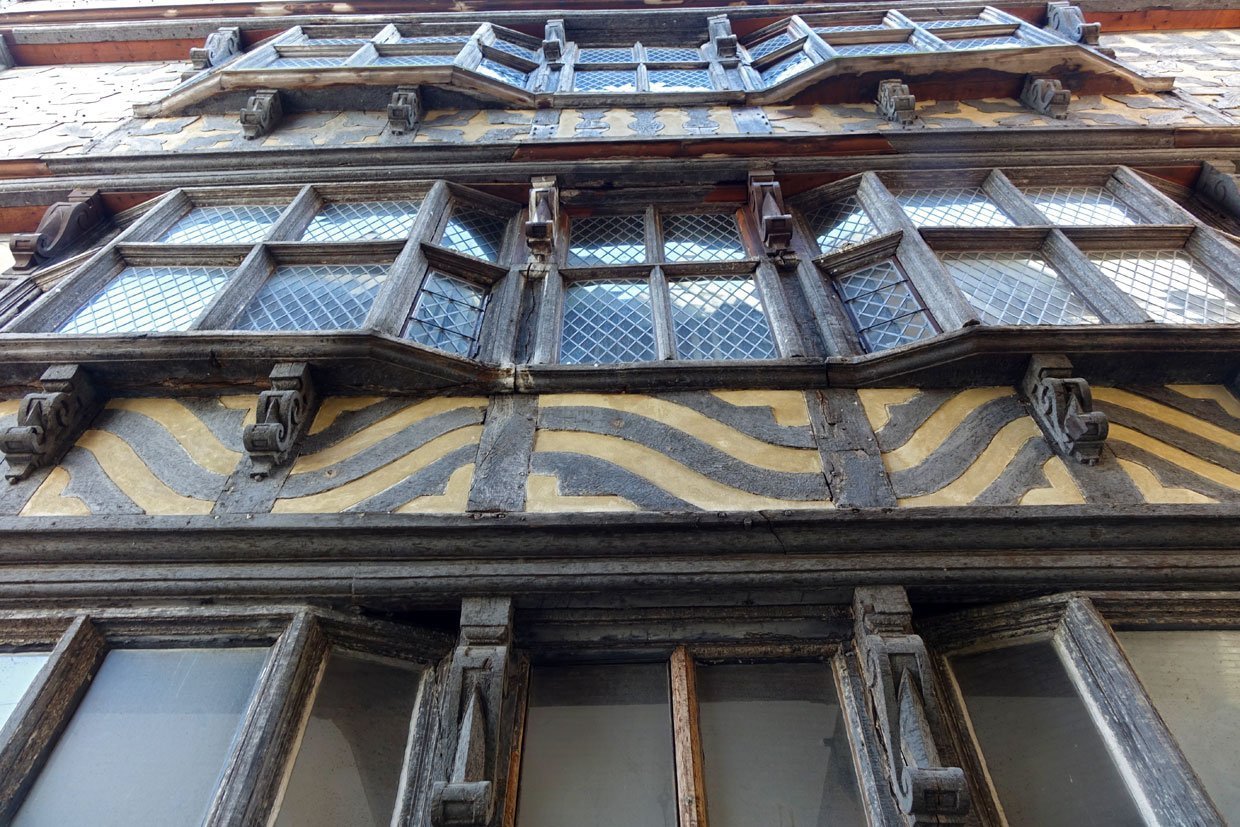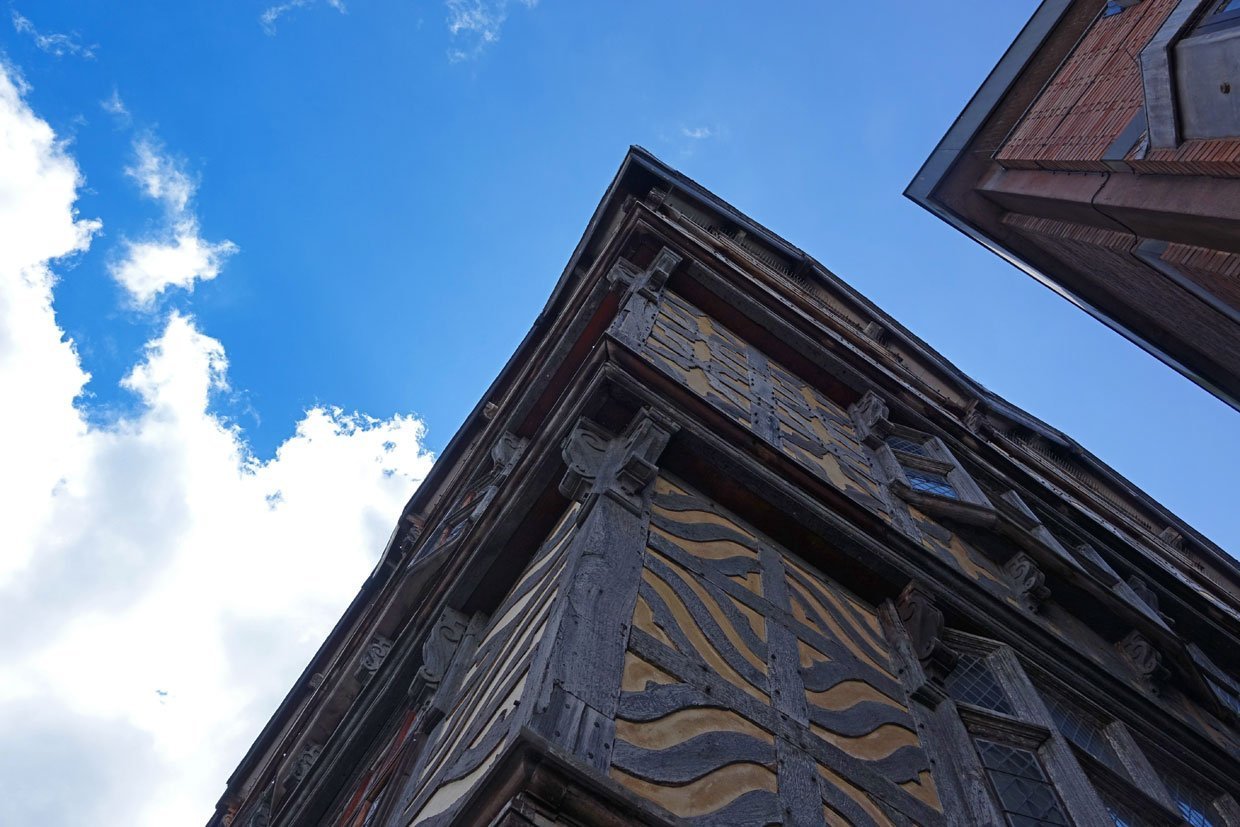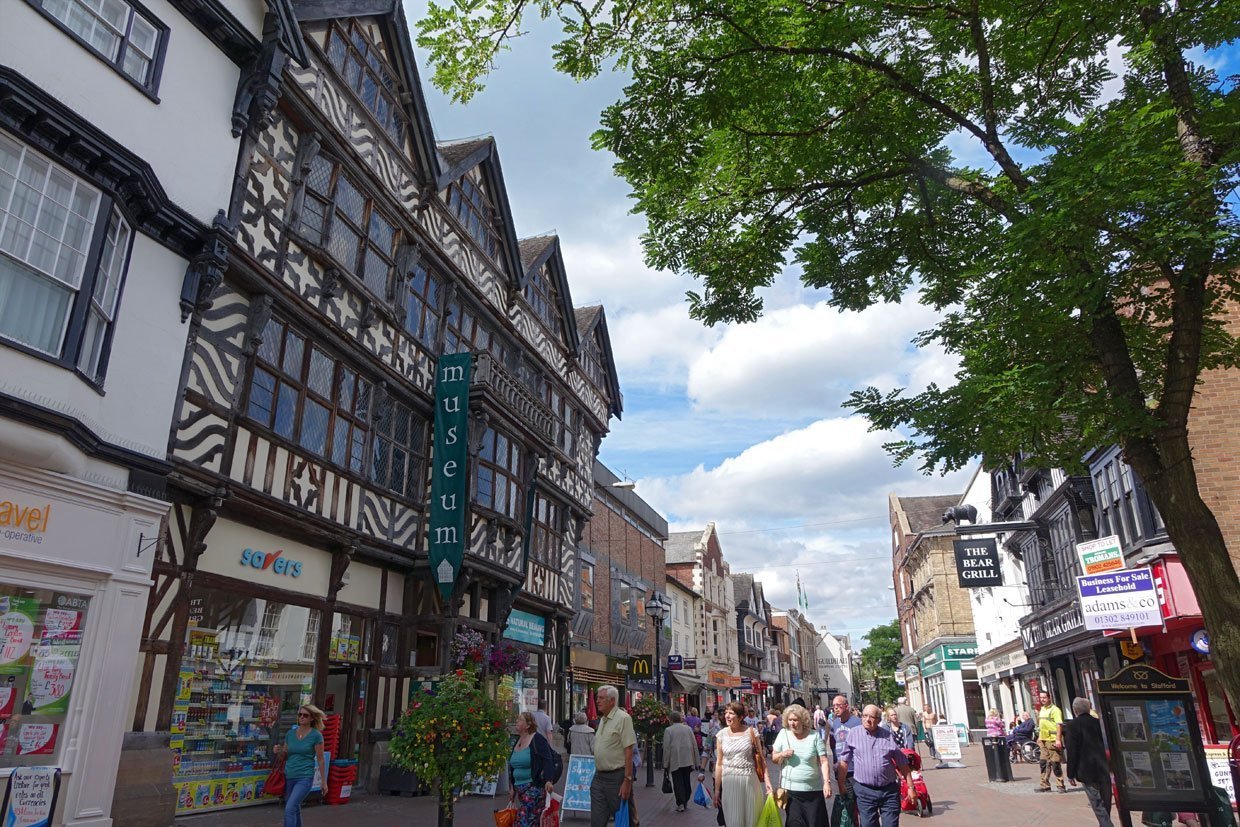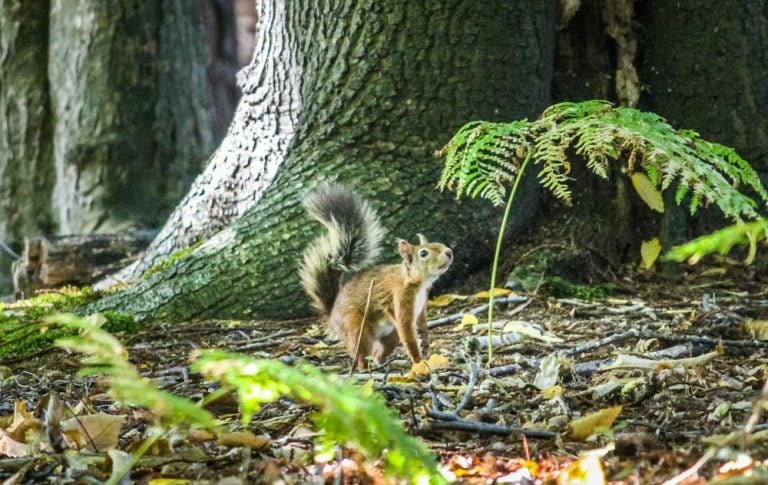The Ancient High House in Stafford, the largest timber framed town house that survives in England. This Tudor, Elizabethan house sits in Stafford High Street and amongst the shops of the modern era. It has seen far more than shoppers in its long history, from prestige beginnings to Royal guests.

The House History
In 1595 the local and wealthy Dorrington family wanted to build a house in Stafford full of grandeur. It is fair to say that when built, the house would have been visible in the skyline for many miles along with Stafford Castle as a backdrop. There was once a great wood, Doxey Wood, that was full of oak trees and stretched from the castle out to the village called Hyde Lea. Once the house was commissioned, many men went to work chopping the great oaks, and plenty of it was needed for this house to be built. Some smaller branches would have gone into making inside structures too. Parts of other houses would have probably been used.

Upping sticks and moving home
Most people have heard the expression ‘up sticks and move’? Well it came from this time period, where you could literally move by upping sticks and moving the entire home to another place or area.

Flatpack House
This was flatpack 16th Century style. Painstakingly making sure the right tree timbers were squared off to the right size for each section. There were so many pieces you can imagine, not your ordinary small furniture flatpack assembly.
Can you imagine, the carpenter and builders had to assemble each side of the house for starters on the ground on a huge area. Numeric markings at every joining part, then they had to be put on so that when assembled all went together as it should.

Royalist Civil War Headquarters
The house became a temporary residence for King Charles I in 1642. Yes the history buffs amongst you will remember that is the year for main beginning of the Civil War.
Within days of starting the campaign proper the King came here with Prince Rupert (Prince Rupert of the Rhine), and made a headquarters within. Dictating orders and making plans. There are a few tales from the time. It is said that Prince Rupert had used the weather vane on the nearby St Mary’s church as target practice with a new form of accurate pistol.


Tales of ghosts
The house of course has no shortage of ghostly tales. The building has also been a school for girls in its long history. One of the said common sightings are of a young girl standing in the middle of a room plus a lady looking like a Victorian nanny in a rocking chair.
One particular sighting of a man going up and down the stairs even had cause for the police to be called for intrusion. The policeman was said to be disturbed to hear the description of the intruder being of a man who used to work in the house but since deceased.
The most famous ghost story you may hear is that in the 1960s a group of American tourists got taken around the house on a tour. In fact the house was not inhabitable in the 60s and disused for any purpose. They later saw an old photo and each one of them were adamant they all recognised their guide The photo was of a shopkeeper who ran a shop in the house in the 1890s however.

Of course, you can’t have a house over 400 years old without a ghost or two can you?

Changes through history
Throughout the 19th Century modifications severely damaged the structure, some chimneys and fireplaces taken out to make more room, the ground floor opened up more shop-like.
In the 1980s the house had been made safe and opened as a museum. You can take a trip through the house and its many eras with memorabilia. The four poster bed, the Civil war room, the Victorian and an Edwardian room. See exhibits showing how the building was made, photos of old and much more. The top floor houses too the museum of the Staffordshire Yeomanry.

If you are in the town Stafford it is a must see, you can’t miss it at all, it is on the main High Street with all the shops!

The tudor facade is unmistakable amongst the modern shop windows. Take a look inside and walk through time and learn more about the town.








